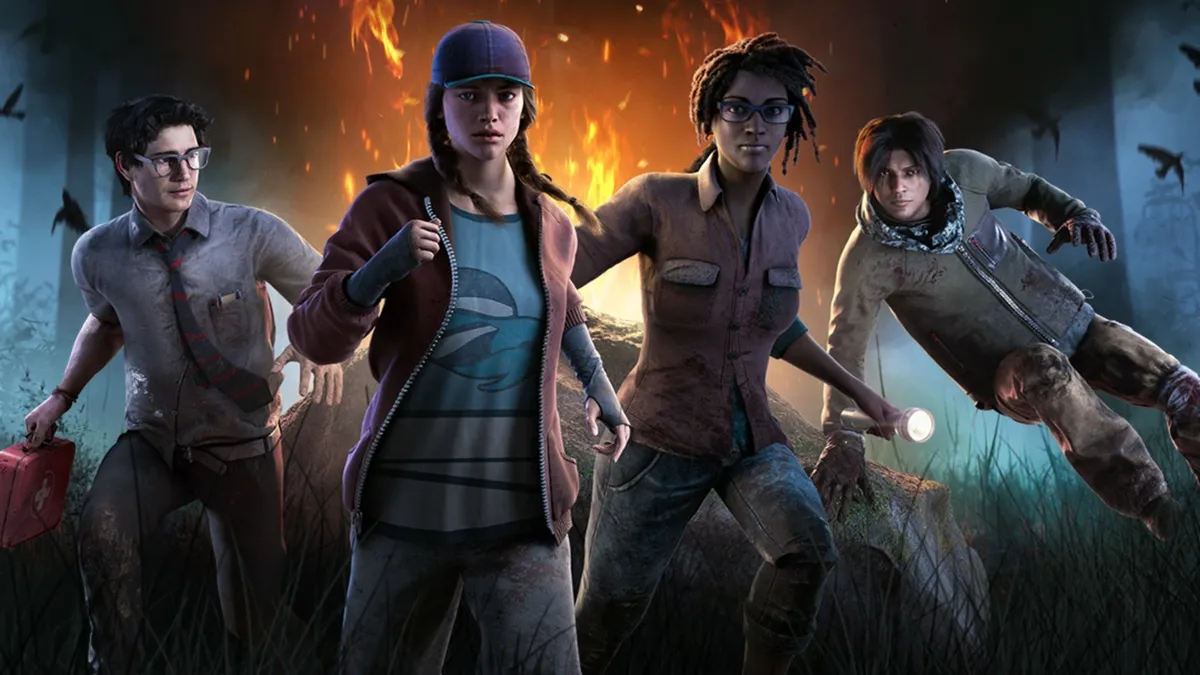
Umbrella Corps mounts a convincing, dismaying case for why Resident Evil should remain a single-player franchise. Although Resident Evil 4’s dependable over-the-shoulder perspective inspired numerous shooters, the series stayed loyal to its methodical gunplay throughout the generations … until now. Umbrella Corps takes a stab at the erratic online engagements that Uncharted and Gears of War invented. It only costs $29.99, but considering Capcom released Street Fighter V at retail price without a story mode, let that fee be a warning.
Contemplate this, too: Was it the dearth of content, the gameplay’s unfinished qualities, or the generic multiplayer focus that compelled Capcom to ship Umbrella Corps with zero marketing fanfare? While Umbrella Corps shows Capcom is willing to wager time and money for radical ideas, those risks must pay off, like the welcoming response Resident Evil VII garnered at last week’s E3. This offshoot lacks the publisher’s absolute support.
With several extra months and paychecks, perhaps we’d see four or five multiplayer modes in Umbrella Corps, not just two. Players control a faceless Umbrella mercenary in One Life Match and Multi-Mission, and neither is more innovative than it sounds. One Life Match plucks a page from Counter-Strike, limiting competitors to one life per round. It’s team deathmatch in its most derivative form, devoid of replay value or passion. Battles end before they build energy, before newcomers learn the map.
Multi-Mission, where objectives vary from round to round, illustrates ambition compared to its counterpart. You collect DNA samples from slain infected, retrieve briefcases in the manner of Halo: Reach’s Headhunter mode, kill enemy soldiers for their collars (i.e., tags), and seize the designated zone as one does in king of the hill. Umbrella Corps is a game of threes – three players per team, three-minute rounds, best three out of five wins you the match. With eight objectives to go around, Multi-Mission’s variety keeps people guessing; it is the only thing the developers do well to combat the festering repetition.

Multi-Mission even includes respawns. While I have nothing against the Counter-Strike crowd, fulfilling challenges, leveling up, and acquiring new gear is moderately easier when operatives don’t spend half a skirmish spectating. Ranks also flow freely in Umbrella Corps. I gained two levels a game on average, targeting opponents for more points to get my hands on the glossier guns faster.
The weapons are a mesh of short-range firearms – pistols, shotguns, submachine guns – that accumulate experience individually. But their unlockable attachments remain a stick without a carrot. Limited to scopes, suppressors, and colorful skins, the weapon customization does not allow the audience to flex its ingenuity and style a gun that stands out from another dozen. The half-hearted modifications extend to your character, too. A handful of gas masks, helmets, and body armors make for poor rewards after purchasing this certified shovelware.
More damning still, the weapons seem closer to pellet guns than actual firearms; they do an embarrassing job of eradicating the undead. Unless I managed to nail a headshot, I sacrificed entire clips of ammo before zombies returned to the grave. The tool of any marginal use is an amusingly named ice axe. Called the “brainer,” this sickle executes victims – living or undead – with a swift spike to the head. It’s the equivalent of Call of Duty’s knife, and the lone penalty to carrying it is the assassination animation that leaves assailants vulnerable.
Umbrella Corps’ perception of balance comes across as laughable. Bullets should be the most effective means for putting attackers down, but the brainer confers additional perks. Equipping your axe whips out the shield attached to your forearm, a shield that guards against incoming headshots. However broken, I can’t deny the rush of running through a mob of monsters, then lodging a scythe in some stooge’s noggin. He gets a lobotomy, she gets a lobotomy, you get a lobotomy.

The brainer has become the Umbrella Corps armament of choice in less than a week, and it’s apparent why. The developers don’t penalize your speed when wielding it, and shields reduce damage to the “zombie jammer” on your back. The infected ignore survivors (until somebody shoots them) while the gadget remains intact. Destroying a person’s jammer, however, snaps every beast to its senses, so I permitted the dead to do my rotten work for me. I’d sneak up on adversaries, unload a bullet in their spines, then watch the local cannibals hunt their newfound meals with incurable hunger and intensity.
Although zombie jammers could prove interesting in future games, sensible design logic eludes Umbrella Corps. Remember the narrow field of view that irked the public when Resident Evil 6 shipped? It’s back. Characters occupy a third of the screen unless they look down a weapon’s sights, leaving operatives open to ambushes from their sides and rear. While Capcom patched Resident Evil 6’s offenses with steady fixes, Umbrella Corps may not be so fortunate, given the love that critics have denied it.
I’d get excited about the maps on tap if were they not a last-ditch effort to tempt fans with our nostalgia. Raccoon City’s police department and Resident Evil 4’s village represent the only recognizable settings, but you have the opportunity to climb their walls thanks to the brainer, or pop out of ventilation ducts that enemies neglected to check. Shortcuts should pave the way for comebacks, except Capcom clogs locations – like Tricell’s headquarters and the Raccoon City streets – with empty vehicles, security doors, and sheet metal barriers. “Remember Kijuju from Resident Evil 5? Here’s a claustrophobic town that looks vaguely similar!”
The environments exist to infuriate. Their slight visual appeal languishes as players struggle to navigate their tortuous floor plans, and the cover system endangers its users more than their enemies. You take shelter at designated corners or walls, and unlike Gears of War, you cannot pull the left stick back to vacate cover. Players must resort to the X button, a prompt Umbrella Corps could not comprehend 90 percent of the time. As I wrestled the controls, assailants often buried a hatchet in my skull.

I should blame the mess of a minimap. Soldiers generate sound when they move, and those decibels register as spikes on the radar. Yet you would need a cartographer to decipher where attackers are and whom gunshots belong to. Did that firefight take place down the hall or on a floor above you? Is that an ally behind me? The developers don’t seem to care. I had greater success listening for the thundering footsteps of someone preparing a surprise for me.
Ambush somebody else and don’t expect them to stay. The Umbrella Corps population shrank overnight, and its mass of network troubles have done a remarkable service of keeping others away. Matchmaking paired my party against an alleged playtester in our first game. Level 53? Really? On a separate occasion, Umbrella Corps crashed to the PS4 dashboard, regurgitating Sony’s infamous CE-34878 code. I attempted to find a different match moments after, at which point the servers booted me because of a transmission error.
Players can join ranked matches before they conclude, and that I do applaud. More financially well-endowed shooters have yet to implement such a necessary feature, though I question the inclusion of public playlists in Umbrella Corps. They don’t offer weapon or player experience. If you receive marginal points for assisting a teammate, at least ranked battles still award your efforts.
Aside from earning emblems you stick on your helmet, it’s worth avoiding The Experiment, too. Nothing changes from Multi-Mission to The Experiment. You revisit the same seven maps that multiplayer contains, amassing briefcases or DNA vials, but you don’t have the benefit of using custom classes or the zombie jammer. The undead attack mercenaries outright, and when the mission assigns you inferior firearms, you either quit or bash your head against a wall until the campaign ends.

The Experiment is as abysmal a single-player mode as they come. It’s telling that, having done knife-only runs in older Resident Evils, I cannot overcome this disaster. Perhaps I’ve just been unlucky, but The Experiment contains the worst gameplay decisions I’ve encountered this year thus far. Zombies soak up an excessive supply of bullets, and you die within two attacks unless you stumble upon a special infected, who eviscerate players after a mere love tap.
The undead respawn from pools of entrails that pollute the area, invoking scenarios where you perish because a hyena manifested like a shocking Final Fantasy summon behind you. While characters do regenerate health if they hunker down in a safe spot for a couple seconds, the developers force fans to replay multi-round stages from the start if they drop dead at any point.
Any one of those mechanics would be cause enough to give The Experiment a wide berth, but together, the carelessness behind this obnoxious mode astounds me. Resident Evil: Operation Raccoon City lowered the series’ bar for spinoffs, securing its place among the top three worst releases alongside Resident Evil Survivor and Gaiden. Umbrella Corps, however, manages to transcend Operation Raccoon City’s faults to a degree I pray we never see again.
Umbrella Corps moves at a frenetic pace, it doesn’t feature an iconic protagonist (the first time since 2004’s Resident Evil Outbreak File #2), and cooperation beats lone acts of heroism – all positives in my eyes. But then frame rates begin to fluctuate, servers kick competitors, and the players glance at their savings account, wondering what $29.99 would have fetched instead. I suggest readers spend their cash elsewhere. Resident Evil fans never asked for … this.
This review is based on the PS4 version, which we were provided.






